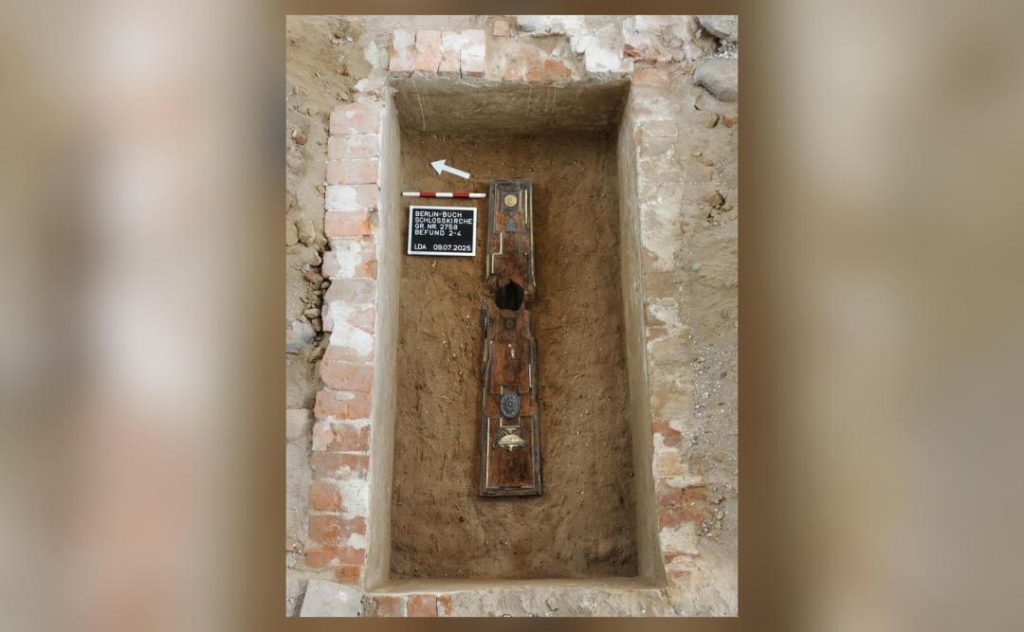
Lost Grave of Prussian King Frederick William II’s 2nd Wife Unearthed in Berlin
In a remarkable archaeological discovery, a hidden crypt beneath the church of Buch Castle in Berlin has yielded an ornate coffin believed to be the final resting place of Julie Von Voß, the second wife of Prussian King Frederick William II. The excavation, carried out by archaeologists from the Berlin State Monument Authority, has uncovered a richly adorned brick-lined and soil-filled grave, featuring numerous gilded moldings and medallions.
Julie Von Voß, a lady-in-waiting to Queen Louise, was married to Frederick William II from 1797 until her death in 1818. Historical records had indicated that she was buried in a single crypt at Buch Castle, a royal residence and hunting lodge that has played a significant role in Berlin’s history. However, the exact location of her grave remained a mystery until now.
According to the Berlin State Monument Authority, the discovery was made during a thorough exploration of the castle’s crypts, which were previously thought to be extensively mapped and documented. The team, led by archaeologist Dr. Susanne Friederici, had been working at the site for several months, meticulously clearing away centuries of debris and rubble to reveal the hidden crypt.
“We were astonished to find the ornate coffin, adorned with gilded moldings and medallions, in such excellent condition,” Dr. Friederici exclaimed in a statement. “The discovery is a testament to the skill and craftsmanship of the royal craftsmen who built the crypt, and we are honored to have been able to uncover this piece of history.”
The crypt, located beneath the castle’s church, is believed to date back to the 18th century, when Frederick William II was still a young prince. The king’s second wife, Julie Von Voß, was a prominent figure at court, known for her beauty and her charitable work. Her marriage to Frederick William II was a union of convenience, aimed at strengthening the royal family’s ties to the aristocracy.
The discovery of Julie Von Voß’s grave is significant not only because it sheds new light on the life and legacy of a forgotten queen, but also because it provides a unique glimpse into the lives of the royal family during the 18th and 19th centuries. The crypt, with its ornate decorations and intricate stonework, is a testament to the opulence and grandeur of the Prussian monarchy.
The excavation has sparked widespread interest in the history of Buch Castle and its royal residents. The castle, which has undergone extensive restoration work in recent years, is now open to the public, offering guided tours and exhibitions showcasing its rich history.
As the archaeologists continue to analyze the contents of the crypt, they hope to uncover more secrets and surprises. The discovery of Julie Von Voß’s grave is a reminder of the importance of preserving our cultural heritage and the need to continue exploring and documenting our shared history.
For more information on the excavation and the history of Buch Castle, please visit the Berlin State Monument Authority’s website at https://www.berlin.de/landesdenkmalamt/aktivitaeten/presse/2025/pressemitteilung.1579466.php.
Source: https://www.berlin.de/landesdenkmalamt/aktivitaeten/presse/2025/pressemitteilung.1579466.php






